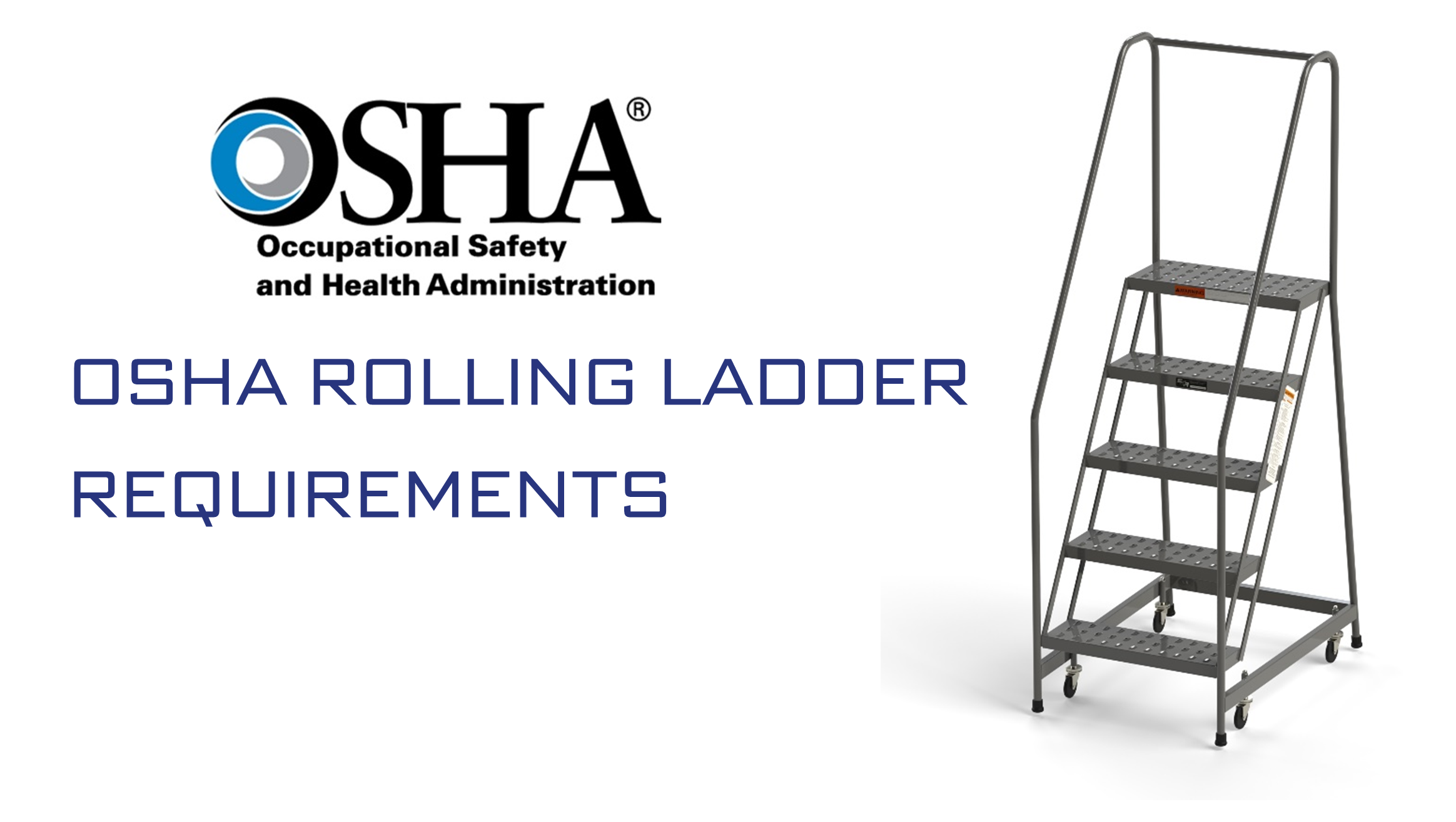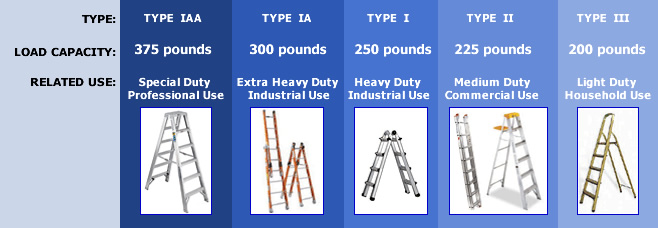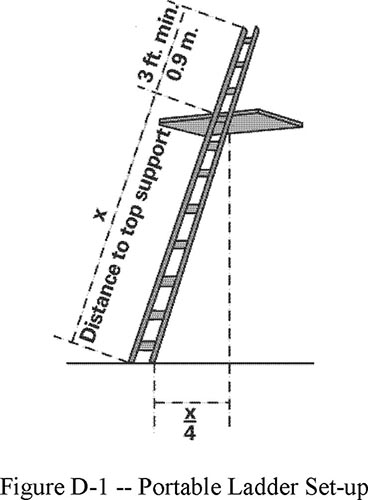The maximum intended load rating for portable ladders is crucial for safety. It indicates the highest weight a ladder can safely support.
Understanding this rating helps prevent accidents and ensures proper ladder use. The load rating includes the user’s weight, plus any tools or materials. Knowing this information can guide you in choosing the right ladder for your needs. Portable ladders come with different load ratings, and using the right one is essential for both personal and workplace safety.
In this blog, we will dive into what these ratings mean, why they matter, and how to select the best ladder for your tasks. Stay safe and informed by learning more about ladder load ratings.
Introduction To Load Ratings
Understanding the maximum intended load rating for portable ladders is crucial for safety. Load ratings help you know how much weight a ladder can safely hold. This includes the weight of the user, tools, and any materials being carried.
Importance Of Load Ratings
Load ratings are vital for preventing accidents. Overloading a ladder can lead to falls and injuries. Knowing the load rating ensures you choose the right ladder for the job.
Load ratings are usually marked on the ladder. They are based on rigorous testing. Look for these markings before using a ladder.
Common Misconceptions
Many people think all ladders are the same. This is not true. Ladders come in different types and load ratings.
Another common misconception is that the load rating only accounts for the user’s weight. It includes the combined weight of the user, tools, and materials.
Some believe that exceeding the load rating by a small amount is safe. This is risky. Always respect the load rating to ensure safety.
| Type of Ladder | Load Rating |
|---|---|
| Type I | 250 lbs |
| Type II | 225 lbs |
| Type III | 200 lbs |
Use the table above to understand the different types of ladders and their load ratings. Always choose the right ladder for your task.
Types Of Portable Ladders
Understanding the types of portable ladders is essential for safety and efficiency. Different ladders serve different purposes, and knowing which one to use can prevent accidents. Here, we will explore two common types: Step Ladders and Extension Ladders.
Step Ladders
Step ladders are self-supporting and do not need to lean against a wall. They are perfect for tasks that require a stable, elevated position. These ladders come in various sizes and are easy to transport.
- Light-duty Step Ladders: Suitable for household tasks.
- Medium-duty Step Ladders: Ideal for general maintenance work.
- Heavy-duty Step Ladders: Used in industrial environments.
Step ladders typically have a maximum intended load rating of 200 to 375 pounds. This rating includes the weight of the user and any tools or materials being carried.
Extension Ladders
Extension ladders are used for reaching higher places. They consist of two or more sections that slide to adjust the height. These ladders must lean against a stable surface for support.
- Single-section Extension Ladders: Used for lower heights.
- Multi-section Extension Ladders: Extend to greater heights.
Extension ladders also vary in their load ratings, typically from 225 to 375 pounds. It’s important to choose the right ladder based on the task and weight requirements.
Here is a table summarizing the maximum intended load ratings for both types:
| Type of Ladder | Light-duty | Medium-duty | Heavy-duty |
|---|---|---|---|
| Step Ladder | 200 lbs | 225 lbs | 375 lbs |
| Extension Ladder | 225 lbs | 250 lbs | 375 lbs |
Always check the ladder’s load rating before use. Safety first!
Determining Maximum Load Capacity
Determining the maximum load capacity of portable ladders is crucial for safety. Understanding the factors and certification processes helps ensure the ladder can handle its intended use. This section explores how to determine a ladder’s load capacity.
Factors Affecting Load Capacity
Several factors influence a portable ladder’s load capacity:
- Material: Aluminum, fiberglass, and wood each have different strengths.
- Design: The shape and structure affect stability and strength.
- Height: Taller ladders may have different capacities due to balance.
- Usage: Indoor and outdoor use can impact durability.
Testing And Certification
Ladders undergo rigorous testing to ensure they meet safety standards. These tests assess:
- Static Load: How much weight the ladder can hold without bending.
- Dynamic Load: The ladder’s ability to withstand movement or impact.
- Fatigue Test: Repeated use over time and its effect on material.
After passing these tests, ladders receive certifications. Look for labels from recognized safety organizations. Examples include OSHA, ANSI, and EN131. These certifications ensure the ladder meets safety requirements.

Credit: www.egaproducts.com
Safety Guidelines For Ladder Use
Using a ladder can be safe if you follow certain guidelines. Ensuring the ladder’s maximum intended load rating is crucial. This guarantees the ladder can support the weight of the user plus any carried tools or materials. Keep reading to learn about proper setup, usage, and maintenance tips.
Proper Setup And Usage
Proper ladder setup and usage are vital for safety. Here are some tips:
- Choose the right ladder for the job. Consider height and load rating.
- Always place the ladder on a stable, level surface.
- Ensure the ladder is fully extended and locked before climbing.
- Maintain three points of contact while climbing. Use both hands and one foot, or both feet and one hand.
- Face the ladder while climbing up or down. Avoid sudden movements.
- Do not overreach. Keep your belt buckle within the ladder’s side rails.
Maintenance Tips
Regular maintenance helps prolong the life of your ladder. Follow these tips:
- Inspect the ladder before each use. Look for cracks, bends, or broken parts.
- Clean the ladder regularly. Remove dirt, grease, and other contaminants.
- Tighten loose bolts or screws. Replace any damaged parts immediately.
- Store the ladder in a dry place. Protect it from harsh weather conditions.
- Follow the manufacturer’s maintenance guidelines. This ensures the ladder remains in good condition.
Choosing The Right Ladder
Selecting the right portable ladder can be challenging. Each task has unique requirements. Safety and efficiency hinge on the correct choice. One key factor is the maximum intended load rating. This rating helps ensure the ladder can support the expected weight. It is crucial for both personal and professional use.
Assessing Your Needs
Before buying a ladder, determine your specific needs. Consider the height you need to reach. Think about the environment where you’ll use the ladder. Indoor tasks might need a different ladder than outdoor projects.
Also, consider the weight of the user and any tools. This will help you choose a ladder that can handle the load. Always check the ladder’s load rating. Ensure it aligns with your requirements.
Comparing Load Ratings
Portable ladders come with different load ratings. Typically, these ratings are:
- Type I: Industrial, 250 lbs.
- Type IA: Industrial extra heavy-duty, 300 lbs.
- Type IAA: Special duty, 375 lbs.
- Type II: Commercial, 225 lbs.
- Type III: Household, 200 lbs.
Choose a ladder with a higher load rating for heavy-duty tasks. For light household tasks, a Type III ladder might suffice. Always consider the combined weight of the user and any additional load.
Use the following table to compare different ladder types:
| Type | Usage | Load Rating |
|---|---|---|
| Type I | Industrial | 250 lbs. |
| Type IA | Industrial extra heavy-duty | 300 lbs. |
| Type IAA | Special duty | 375 lbs. |
| Type II | Commercial | 225 lbs. |
| Type III | Household | 200 lbs. |
Understanding these ratings ensures safety and efficiency. Choose wisely based on your specific needs and tasks.

Credit: www.dir.ca.gov

Credit: www.osha.gov
Frequently Asked Questions
What Is The Maximum Load Rating For Portable Ladders?
The maximum load rating for portable ladders varies by type. Typically, it ranges from 200 to 375 pounds.
How Do I Determine A Ladder’s Load Rating?
Check the ladder’s label or manual. It clearly states the maximum load rating.
Are All Ladders Rated The Same?
No, different ladders have different load ratings. Always check the specific rating before use.
Why Is The Load Rating Important?
The load rating ensures safety. It indicates the maximum weight the ladder can safely support.
Can Exceeding The Load Rating Cause Accidents?
Yes, exceeding the load rating can lead to ladder failure. It increases the risk of accidents.
Conclusion
Selecting the right portable ladder with the correct load rating ensures safety. Know your needs and choose accordingly. Always check the ladder’s label for maximum load capacity. This helps prevent accidents and extends the ladder’s life. Remember, safety should be your top priority.
Stay informed, stay safe, and pick wisely. Now, you can confidently use ladders for various tasks. Happy climbing!
Recent Posts
Maintaining clean gutters is essential for preventing water damage to your home, and choosing the best ladder for cleaning gutters can make the job much easier and safer. With so many options on the...
Best Ladder for Cleaning Caravan Roof: Top Picks for You Every Adventure!
Today we will discuss the best ladder for cleaning caravan roof. Cleaning caravan roofs is one of the crucial tasks.After many days, a caravan roof can get dirty by debris, dirt, and grime. These can...
